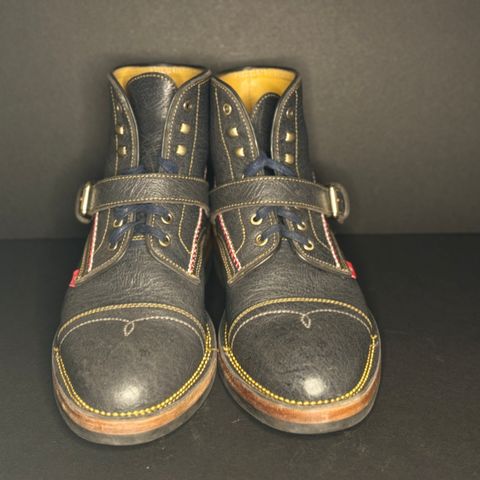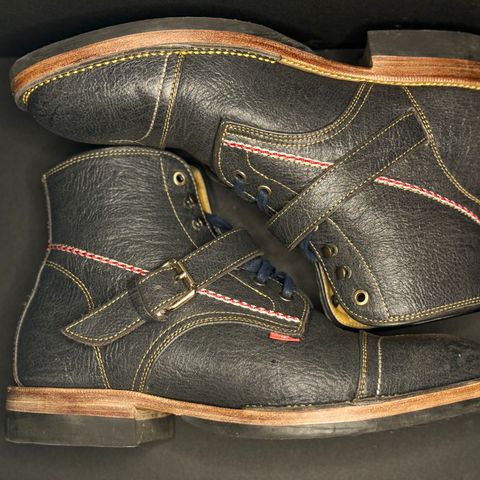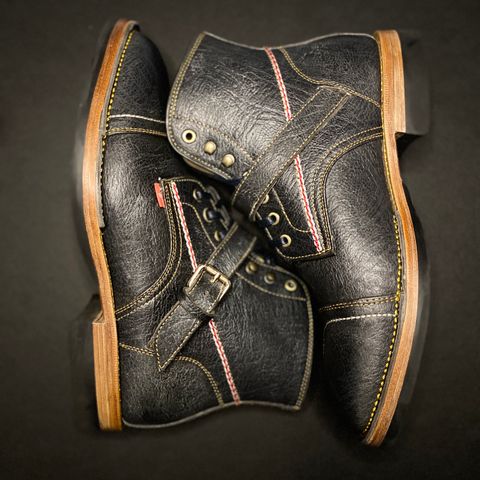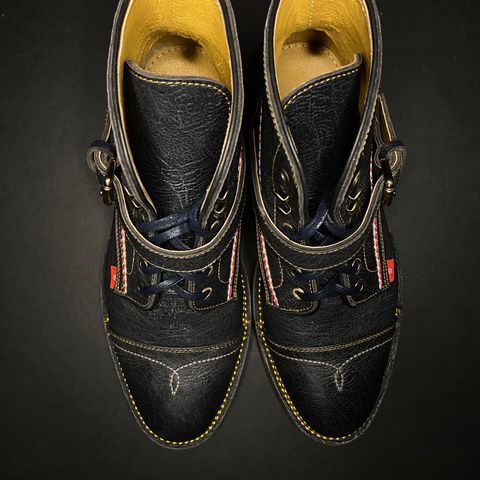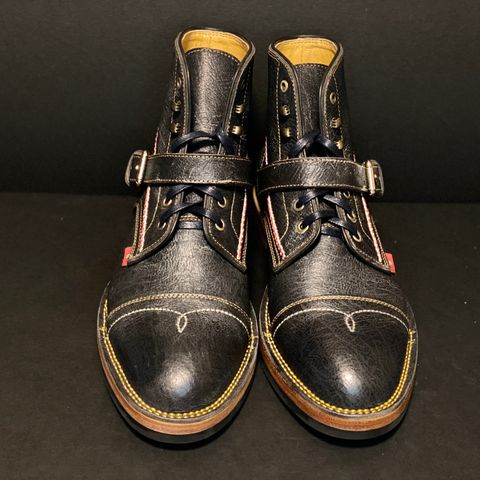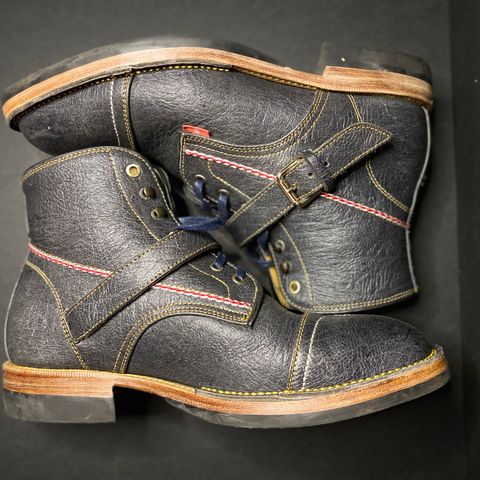About
Kudu Jamaica is a kudu leather with an embossed and tipped finish produced by Charles F. Stead, a tannery in Leeds, England. The leather features a distinctive two-tone gloss finish and is characterized by its sturdy yet supple properties, making it suitable for heritage footwear applications.[1]
About
Kudu Jamaica is a kudu leather with an embossed and tipped finish produced by Charles F. Stead, a tannery in Leeds, England. The leather features a distinctive two-tone gloss finish and is characterized by its sturdy yet supple properties, making it suitable for heritage footwear applications.[1]
The leather is made from kudu antelope hide sourced from southern Africa through seasonal licensed culls to control population numbers.[3] Each hide displays unique natural characteristics including scars, scratches, and markings from the animal's life in the wild, contributing to the leather's individual character.[1][3]
Characteristics and finish
Kudu Jamaica features an embossed and tipped finish that creates a distinctive texture and two-tone gloss appearance.[1] The embossing process enhances the natural grain pattern while the tipping adds depth and visual interest to the leather surface.
The leather is characterized as sturdy but supple, combining structural strength with flexibility.[1] This combination of properties allows the material to provide durability while remaining comfortable in footwear applications. The full grain structure preserves the natural characteristics of the hide.[2]
Natural features are prominent in Kudu Jamaica, with skins displaying small holes, scars, defects, and bite marks from the animal's wild origins.[1] The leather features unique scars and scratches acquired during the kudu's life in the African bush.[3] Each skin has its own unique character that varies greatly across different areas of the hide.[2][3]
Specifications
Kudu Jamaica leather has a weight of 1.8-2.2 mm, equivalent to 4.5-5.5 oz in thickness.[2][3] The average skin size ranges from 12-16 square feet,[2] though individual piece sizes can vary from 10-22 square feet depending on the specific hide.[3]
The leather uses a full grain structure with a semi-aniline finish, characteristic of Charles F. Stead's kudu leather family.[2] The reverse side features a soft suede texture, while the grain side presents a nubuck character.[3] The leather retains the inherent suppleness typical of kudu material while featuring a distinctive pull-up effect.[3]
Source and production
Kudu Jamaica is produced by Charles F. Stead, a tannery established in Leeds, England.[1] The leather is made from kudu antelope hide,[2][3] with skins sourced from southern African antelope populations living wild in the bush.[3]
The sourcing follows sustainable practices through seasonal licensed culls designed to control population numbers.[3] This approach provides a managed supply of raw materials while supporting wildlife population management in southern Africa.
The production maintains the natural characteristics of the kudu hide while applying the embossed and tipped finishing treatment. The tanning process preserves the leather's soft and supple qualities despite its origin from a wild animal that regularly encounters thorny vegetation.[2]
Applications
Kudu Jamaica is intended for several heritage footwear categories. The leather is used in men's goodyear fashion shoes, providing a distinctive appearance suitable for dress footwear applications.[1] Western boots represent another application, where the leather's durability and character complement traditional Western boot styling.[1]
Golf shoes utilize Kudu Jamaica for its combination of flexibility and weather resistance.[1] The leather is also specified for high quality accessories, extending its use beyond footwear into leather goods applications.[1]
References
"Kudu Jamaica". Charles F Stead and Co Ltd. Retrieved September 30, 2025.
"Kudu Original". Charles F Stead and Co Ltd. Retrieved September 30, 2025.
"C.F. Stead Kudu Waxy Leather". The Tannery Row. Retrieved September 30, 2025.
